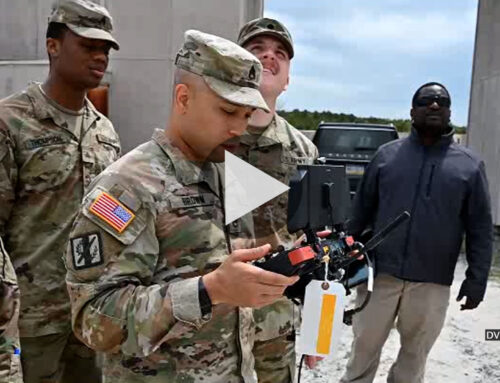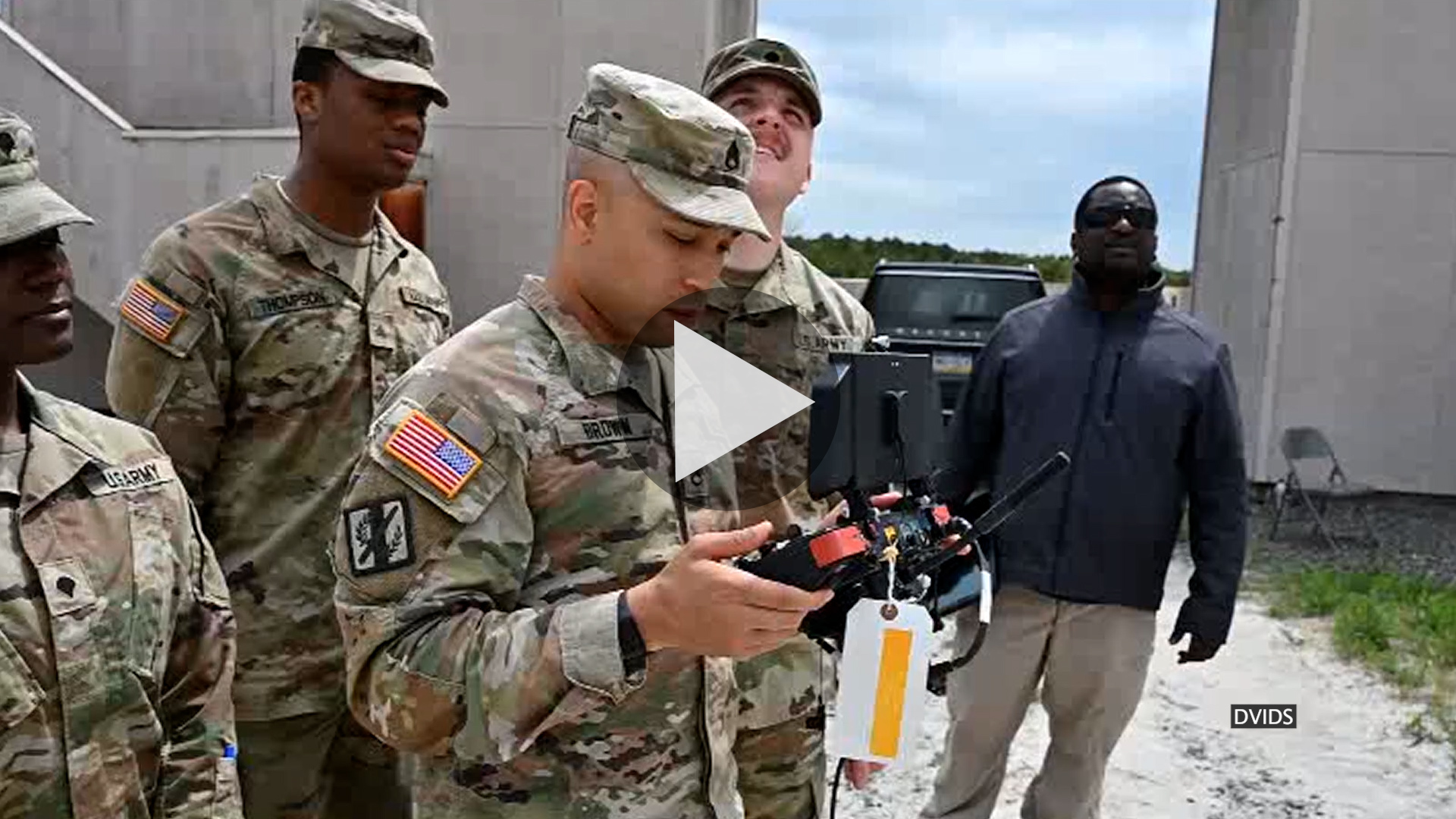
A solid rocket motor developed by Ursa Major is preparing to be tested at its Berthoud, Colorado campus. (Ursa Major)
WASHINGTON — RTX weapons arm Raytheon and defense startup Ursa Major Technologies have completed two successful test flights of a missile propelled by a new solid rocket motor, the companies announced today.
The recent tests mark a step forward in Ursa Major’s path to become a third provider of solid rocket motors for the US weapons industry around 2026, when qualification of the technology is currently scheduled, the companies stated in a news release.
“There is a new player on the scene in the solid rocket motor industry,” Ursa Major CEO Dan Jablonsky told reporters during a roundtable. “This is an Army program that we’ve been working on with Raytheon. In this particular program, we went from concept and design to firing and flight on the range in just under four months, which is lightning fast.”
The two test flights, held at Naval Air Weapons Station China Lake in California, involved a Raytheon-made missile propelled by an Ursa Major solid rocket motor measuring less than 10 inches in diameter, Jablonsky said.
However, much about the capability Ursa Major is developing — and the weapon that will use it — is shrouded in mystery. Jablonsky declined to comment on whether a missile from an existing program of record or a newly-developed design was flown during the tests. Nor did he comment on the range of the weapon involved or the exact size of the rocket motor.
RELATED: Ursa Major takes aim at DoD solid rocket motor market
A Raytheon spokesperson referred questions about the missile to the Army, adding that the company “is working with several rocket motor suppliers to rapidly develop and deliver affordable solutions to the US Army at the speed of relevance.”
Over the next year, Ursa Major plans to do more test flights with Raytheon, including with an extended range version of the weapon. It will also expand its facilities to enable the company to ramp up production when the design is fully qualified, he said.
“Not only do we expect to pick up programs of record in the vicinity of what we’ve just flown … but we used and proved out our agile manufacturing techniques in doing so,” Jablonsky said, adding that Ursa Major could provide surge capacity for other programs of record with Raytheon or potentially other weapons companies.
The US solid rocket motor industry is currently limited to only two vendors: L3Harris’s Aerojet Rocketdyne subsidiary and Northrop Grumman, which acquired manufacturer Orbital ATK in 2018. The already fragile SRM industrial base was hit hard by supply chain constraints caused by the COVID-19 pandemic and has struggled to recover as demand for weapons skyrockets due to the war in Ukraine.
Executives from defense primes like RTX and Lockheed Martin have expressed frustration with current providers’ production capacity and schedule challenges, and are injecting money and technical know-how with other companies interested in broadening the industrial base. But while several defense tech startups such as Ursa Major Technologies, Anduril and X-Bow Systems have announced plans to enter the market, it will take years for their designs to be tested and qualified.
RTX Ventures, Raytheon’s venture capital arm, has been investing in Ursa Major since 2023. In the 14 months since Ursa Major first stood up its solid rocket motor manufacturing cell, it has grown that unit to about 40 employees, Jablonsky said
Ursa Major has developed configurations of motors from two-inch diameter — about the size used for shoulder-launched weapon systems, to 22-inch diameter motors that could be used for vertical launch systems. The company is also producing its own energetics — a decision that Jablonsky said will keep Ursa Major from having to rely on the same suppliers already working to their limits to support existing solid rocket motor requirements.
Other major weapons makers are also engaged in partnerships with potential new motor suppliers.
In August, Lockheed announced it would partner with General Dynamics Ordnance and Tactical Systems to develop the latter company as solid rocket motor manufacturer for Lockheed’s Guided Multiple Launch Rocket System (GMLRS). At the time, executives said the first motors would roll off GD’s production line in Camden, Ark., around 2025. If that effort is successful, GD-OTS could begin producing motors for additional systems.











